Uno stabilizzatore idrofonante è una delle migliori invenzioni per la macchina e il ricamo a mano. Noto anche come stabilizzatore di lavaggio, Questo prodotto può fungere da supporto o topper per i tuoi progetti di ricamo.
Non solo aiuta a fornire cuciture pulite su tessuti difficili, ma non lascia nemmeno segni sul retro una volta rimosso.
If you’;essere interessato, let’;s Discutere i tipi di stabilizzatori di lavaggio, Come usare stabilizzatori idroeflidi per i ricami, E infine, Come rimuovere gli stabilizzatori solubili in acqua!
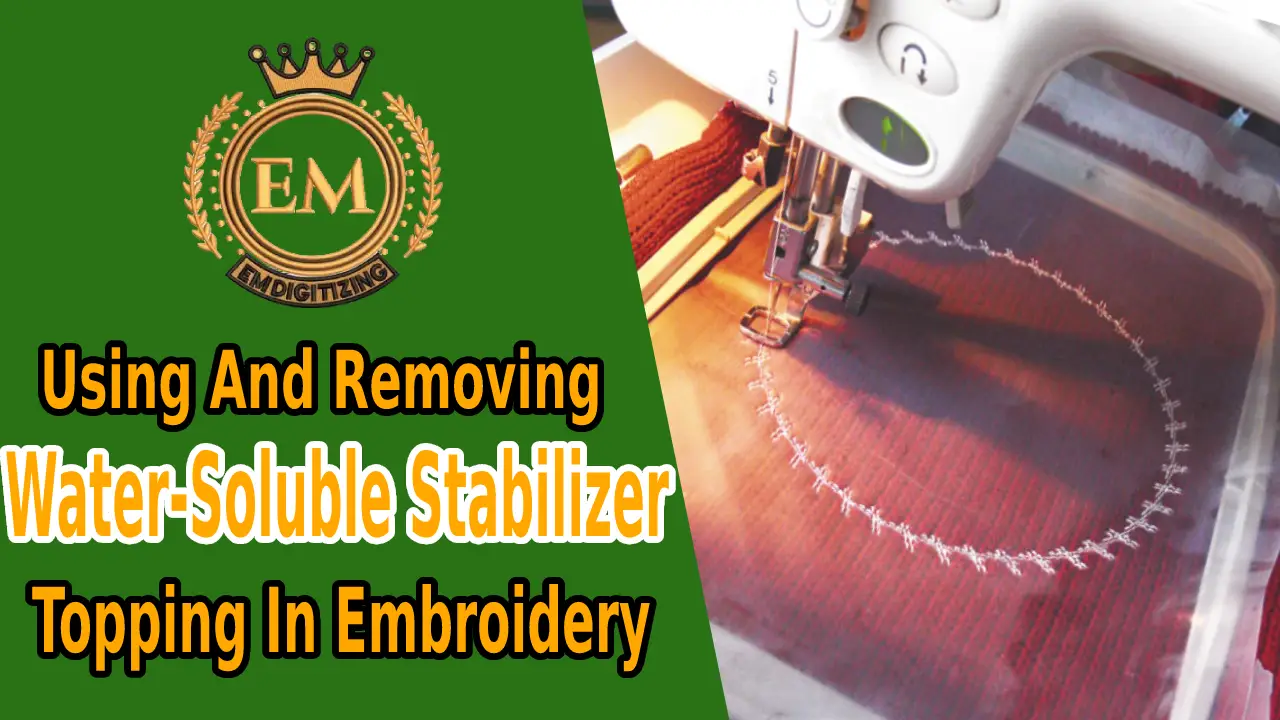
Servizi di digitalizzazione del ricamo
Cos'è il topping stabilizzatore solubile in acqua?
Se hai qualche esperienza di ricamo, Sai quanto sia importante includere uno stabilizzatore quando si cucina il design del ricamo. Diversi stabilizzatori hanno usi diversi. You’;probabilmente sentito parlare di condimenti solubili in acqua, also known by their trade name “;Solvay.”; If you don’;t so quali sono i condimenti solubili in acqua, Potresti voler aggiungerlo alla tua scorta di ricami!
Topping stabilizzatore da ricamo solubile in acqua (o WST in breve) viene applicato a qualsiasi cosa con un pisolino alto (tessuto denso), compresa il tessuto Terry, camicie da golf, pile, e altri materiali strutturati. Fai clic qui per conoscere i tessuti principali utilizzati nei ricami a macchina.
Questi tessuti hanno colline e valli diverse nella loro consistenza, che colpisce il modo in cui il ricamo è cucito. Senza usare WST, Potrebbe essere difficile per il tuo filo da ricamo penetrare correttamente il tessuto e risultante in ricami danneggiati. Quando usi WST sul tuo progetto, Permette ai punti di rimanere sopra le fibre del tessuto. Questo porta la densità alle scanalature, Dare al tuo ricamo un aspetto più pieno mantenendo anche linee pulite nei punti di raso.
Usando lo stabilizzatore idrofonante come condimento
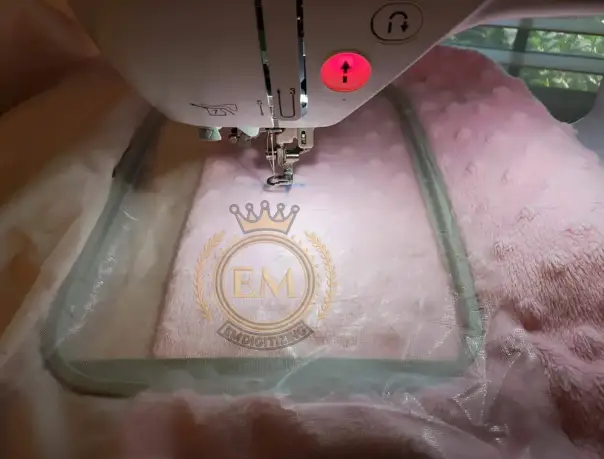
Uno stabilizzatore solubile in acqua leggero (EG Silky Solvay) è eccellente come topper da ricamo.
Se il tuo tessuto ha qualche tipo di lanugine, mucchio, pisolino, o addirittura squishità, you’;Ll beneficia dell'utilizzo di uno strato di condimento solubile in acqua.
Questo condimento supporta i punti e impedisce loro di affondare nel tessuto. Anche quando ricamerano magliette morbide e squishy, Ottengo risultati migliori usando un topping solubile in acqua.
In alternativa, if your project can’;essere esposto all'acqua ma hai ancora bisogno di un topper, Considera il film di calore, che si sfiora quando sono stirato più tardi.
Esistono due modi principali per utilizzare condimenti solubili in acqua. Puoi attaccarlo al tuo tessuto o puoi galleggiare in cima.
Quando galleggia, Usa uno strato leggero di adesivo temporaneo a spruzzo, perni, o addirittura nastro per fissarlo bene. O, Puoi bagnare leggermente i lati del stabilizzatore (fuori dall'area ricamata) e incollalo in quel modo.
Usando lo stabilizzatore di lavaggio come supporto
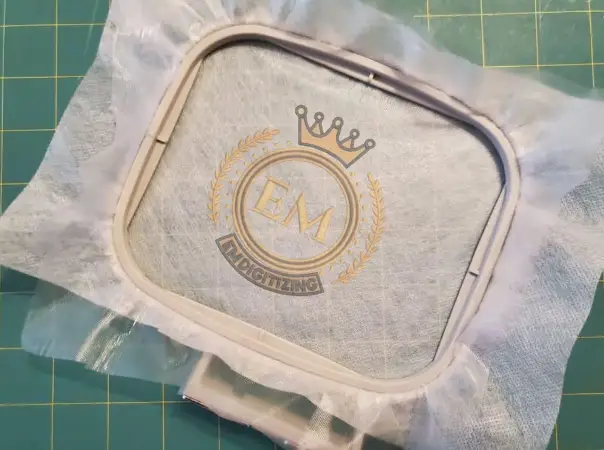
I tipi di supporto Wash-A includono tipi di tessuto fibroso e film pesante solubile in acqua stabilizzatori.
Per usarlo come stabilizzatore, primo, Seleziona il peso dello stabilizzatore e anche il numero di strati richiesti in base alle caratteristiche del tessuto e alla densità del tuo disegno del ricamo. (Leggi di più nella guida allo stabilizzatore del ricamo.)
Uno stabilizzatore di lavaggio può essere applicato sul retro del tessuto per essere ricamato a macchina. O, Il tessuto può essere semplicemente galleggiato sopra il lavaggio a cerchio. (Ci sono anche stabilizzatori di lavaggio appiccicoso, che sono fantastici!)
E, in alcuni casi, Puoi semplicemente tendere il lavaggio o lo stabilizzatore e quindi ricamare su di esso. Questo accade quando si eseguono ricami di pizzo gratuiti o si fanno alcune patch.
Lo stabilizzatore di lavaggio è un'ottima alternativa a uno stabilizzatore di lacrime, Fornire un po 'di stabilità extra e impedirti di raccogliere piccoli pezzi dal retro di intricati disegni di ricami in seguito. Fondamentalmente, use it any time you don’;t need a residual stabilizer and it doesn’;t dipende dalla stabilità dello stabilizzatore di taglio.
Per disegni molto densi o tessuto molto lungo, anche se, Uno stabilizzatore solubile in acqua potrebbe non essere l'unica opzione. In questo caso, Potresti voler passare a uno stabilizzatore a maglie cut-off o no-show per una maggiore stabilità.
Come rimuovere lo stabilizzatore idrofonante
Se hai usato uno stabilizzatore di lavaggio come supporto per il tuo ricamo, Il miglior metodo di rimozione è tagliare lo stabilizzatore vicino al retro del disegno Usando le tue forbici da ricamo preferite. (I miei bibill di anatra sono forbici Applique!)
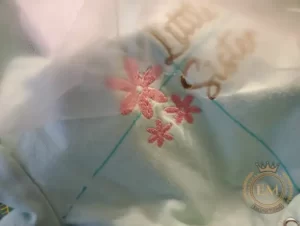
Quindi, Esegui l'oggetto ricamato attraverso la lavatrice, Immergilo in acqua, o anche eseguirlo sotto il rubinetto fino a quando lo stabilizzatore non si dissolve.
È necessario lavare tutti gli stabilizzatori di lavaggio di tipo carta dal progetto per la prima volta. Altrimenti, La rigidità che fornisce può essere permanente dopo l'asciugatura. Mentre questo può essere migliore quando ricamoso pizzo autoportante, Il tuo progetto in-the-hoop potrebbe aver bisogno di una sensazione più morbida.
Se hai usato un topper solubile in acqua, Prima clip tutti i punti di salto e poi strappa il più stabilizzatore possibile con le dita. Prossimo, Hai alcune opzioni per rimuovere il rimanente stabilizzatore idrofonante.
1. Acqua del rubinetto
Immergi il vuoto in acqua, eseguilo sotto il rubinetto, o mettilo attraverso la lavatrice. Comodo, Ma questo vuoto richiede un po 'di tempo per asciugare.
Puoi persino usare un tampone di cotone umido o un tovagliolo di carta bagnato se si desidera asciugarsi più velocemente. I’;ve ha visto alcune persone usare salviettine per bambini, Ma il marchio che uso per la mia figlia più giovane lascia molta lanugine alle spalle.
2. Usa un rimozione della coda di cucitura
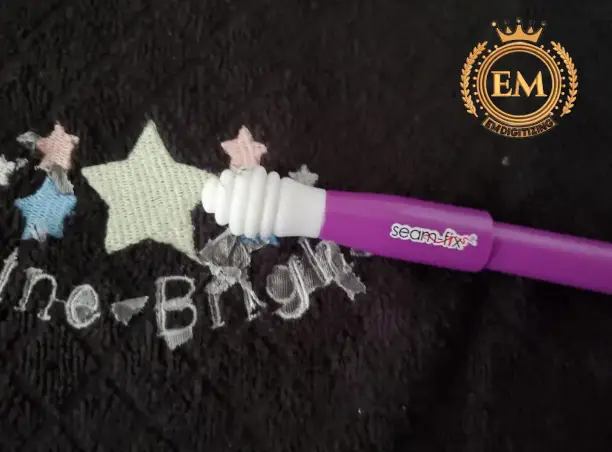
Ho visto una ricetta su Craftsy per l'utilizzo di Seven Fix per rimuovere i condimenti solubili in acqua, ed ero entusiasta di provarlo! Era onestamente un po 'carente. Ha funzionato alla grande per alcuni vestiti, E poi alcuni, Come l'asciugamano sopra, Non tanto.
Tuttavia, Se disprezzi rivelando il tessuto in acqua per rimuovere il topper, Potresti divertirti a sperimentare questa opzione!
3. Asciugamano di carta umido + Ferro
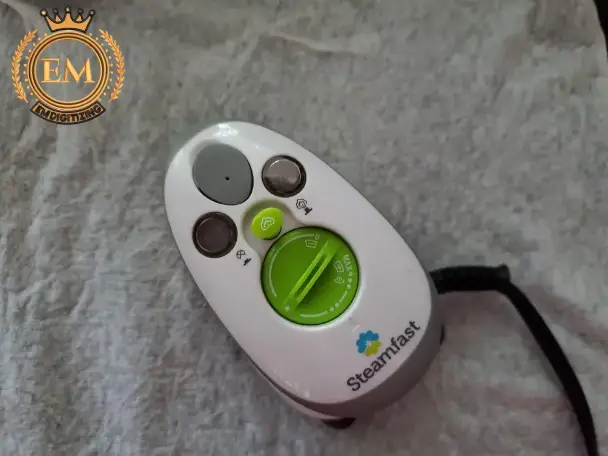
Silky consiglia di mettere un umido, Asciugamano di carta testurizzata sopra il design finito e quindi premendolo con un ferro a fuoco medio senza vapore.
Tutto il condimento si attaccherà al tovagliolo di carta quando lo rimuovi. (Mi piace usare il mio mini ferro per un migliore controllo dell'area pressata.)
It’;non è il mio go-to, Nonostante quanto funziona bene.
Prima, Devi stare molto attento a tenere il ferro solo per un secondo. E, if you’;stai usando fili metallici o alcuni tipi di tessuto, stirare il ricamo dalla parte anteriore è un'idea terribile. I just don’;T L'occasione per i miei progetti delicati.
4. Una palla da tennis
Di recente ho notato che puoi usare una sfera da tennis per aiutare a rimuovere i condimenti solubili in acqua. Ecco un link a un video di John Deere su questo metodo. I’;non l'ha mai provato, Ma sembra interessante!
Smabilizzatore idrico riutilizzato come stabilizzatore liquido
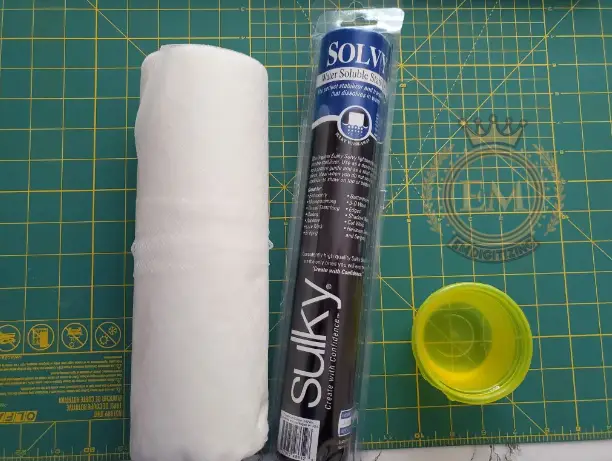
If you’;re parsimonioso o un amante del riciclaggio come me, you’;Saremo entusiasti di apprendere che puoi riutilizzare piccoli frammenti di stabilizzatori idroblici per creare stabilizzatori a spruzzo liquido.
Questo è un ottimo modo per stabilizzare i tessuti sottili prima di ricamare (Hai ancora bisogno di un vero stabilizzatore sul retro).
It’;è anche ottimo per impedire al tessuto in maglia di arricciarsi ai bordi e funziona bene al posto dell'amido o della magia di Terrell per molti progetti. Quando lavi il tuo articolo per la prima volta, è lavato.
Conclusione
Auspicabilmente, Questo tutorial ti ha aiutato a comprendere meglio i condimenti stabilizzatori solubili in acqua e quando usarli. We’;ve ha mostrato come usarlo in modo più efficace (e abbiamo menzionato budget friendly) Per rimuovere eventuali pezzi piccoli e difficili da essere. Be sure to pick up an inexpensive tennis ball the next time you’;re out and about because you never know when you’;ne ho bisogno per il tuo prossimo progetto di ricamo.
Se vuoi saperne di più su altri tipi, Stabilizzatore per ricamo a macchina!
It’;S facile da usare e funzionerà con qualsiasi progetto a cerchio. Basta posizionare Scilaggi sul tuo progetto, Completa il tuo cucito/trapunta/ricamo, e immergilo nell'acqua o eseguilo attraverso il ciclo di lavaggio e scomparirà.
Aggiungi una piccola quantità di sapone delicato o liquido per lavare. Metti tutto il tuo pezzo di ricamo nella ciotola e lascialo in ammollo per un po '. Be generous with the time –; Lascialo immergere bene. Risciacqualo delicatamente, in modo che il sapone penetri nel tessuto.
Il tessuto solubile in acqua è costituito da reti di fibre di alcool polivinilico solubili in acqua calda e una resina solubile in acqua aderisce alle fibre per formare il tessuto.
I condimenti solubili in acqua sono anche noti come sol-u-film e solvay. Sono usati per evitare che le cuciture si tuffassero in tessuti di alto profilo come i tessuti di lana e terry come mostrato a destra. Applicare il condimento sulla parte superiore del tessuto e rimuoverlo con vapore o uno spray d'acqua fine.
Lo stabilizzatore di carta solubile in acqua per discesa di stampa è perfetto per i progetti che coinvolgono la carta, Applique, trapuntatura, e ricami. Diventa creativo con disegni stampati, oppure disegna direttamente sul punto di stampa con una matita o un marcatore permanente!
